Motor play and Developmental Orientation & Mobility (DOM)
Discover how motor play and Developmental Orientation & Mobility (DOM) can benefit children with vision impairments. Learn fun activities to enhance body awareness and spatial skills.
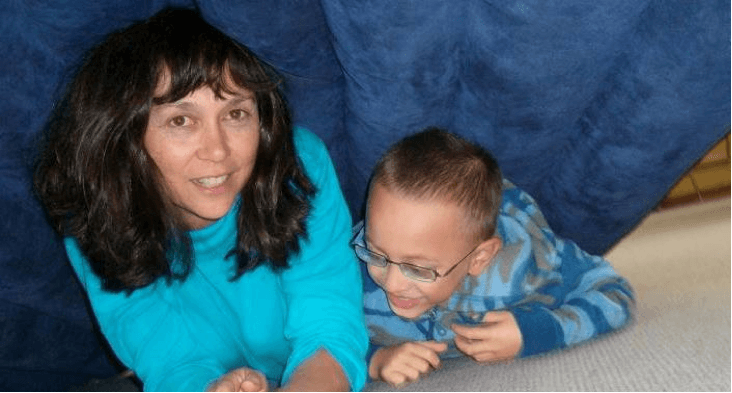
About motor play and Developmental Orientation & Mobility
NB: All motor activity programmes need to be checked to ensure they are safe for the student.
DOM is moving with confidence and purpose
Students with vision impairment have less motivation to move, in a scary world and therefore are at risk of problems with moving well later on.
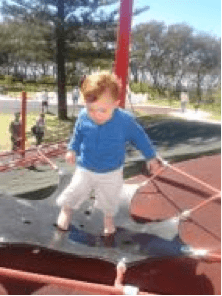
Figure 2 - Balancing on a trampoline in the playground
Good posture and gait later on is dependent on loads of early movement.
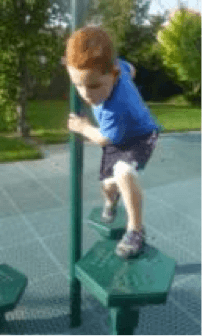
Figure 3 - Stepping from one platform to another
Encouraging the child with vision impairment to want to move and play actively is extremely important!
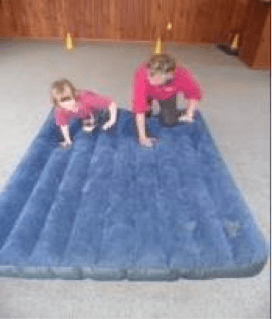
Figure 4 - Crawling on an airbed
Motor play ideas
- Rough and tumble, as much as possible, from as early on as possible.
- Talk about the different movement and body parts as you play!
- Bounce on trampolines, rock and swing.
- Crawl, climb and go through obstacle courses often.
- Have the child move for himself, actively ‘helping’ with daily/dressing tasks. Give oodles of TIME to respond and engage.
- Encourage children to do as much for themselves as possible, engaging their body and the world around them.
- Have fun!
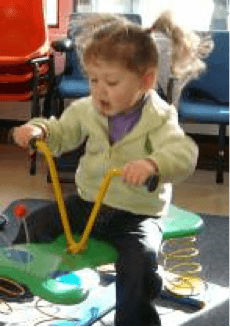
Figure 5 - Playing on a spring rocker
Motor Play helps the child:
- Organise and develop the brain.
- Learn about the body and how to move it efficiently.
- Learn about space.
- Master the environment.
- And it’s fun!
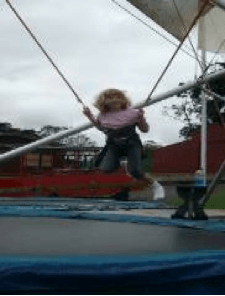
Figure 6 - Young girl on a bungy trampoline

Figure 7 - Rough and tumble with dad
Kids with a vision impairment sometimes need to have a bit of guidance to want to move and have fun with motor play.
So join in and have fun! Talk and move and push and roll together!
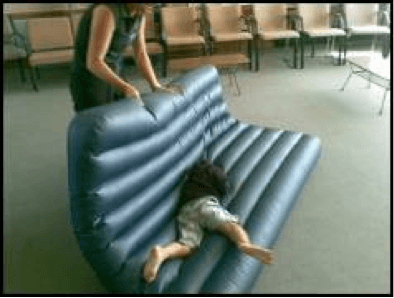
Figure 8 - Child being rolled around on an airbed by O&M instructor
'Sensory' and 'motor' play have positive impacts on the development of body image and motivation to move and engage.
It is especially important when there is a vision impairment!
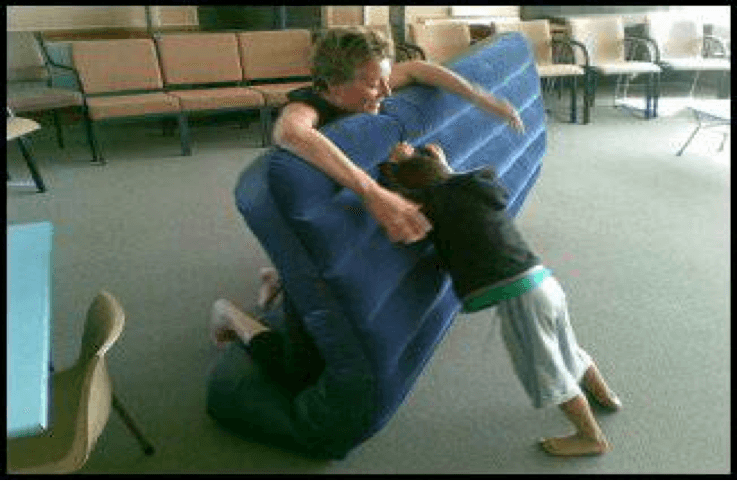
Figure 9 - Holding up an airbed while child pushed against the airbed
Sensory Motor Play is important because it:
- Is interactive, and you communicate heaps – visually, through speech, tactually – while playing.
- Helps you learn about HOW your body moves by actively moving it and labelling those moves.
- Provides fun opportunities to learn things like 'beside', 'in front', 'behind', 'left', 'right' and so on.
- Primes the brain for learning!

Figure 10 - Child crawling on an airbed
Motor play helps develop body image
Body image is:
- Knowledge of the body and its parts.
- Knowledge of how to move with efficiency and ease – 'doing without thinking'.
- Promoted by vision (it can be lacking if the child is vision impaired).
- The foundation for learning about space and relationships of things in space.
- Crucial for relating the self to the environment.
- Developed by motor activity.
Poor body image can lead to:
- Inability to move body parts efficiently.
- Lack of desire to move because it is too hard to think through.
- Difficulties with dealing with the environment because the child cannot relate to it because he hasn't organised himself first.
- Lower fitness, strength, balance ability, than peers.
- Passivity, acting out, tactile 'defensiveness' (selectivity).
Poor body imagery can present as:
- Being clumsy.
- Not wanting to or able to engage or follow tasks involving movement or seeing.
- Opting out of doing things normally fun for their age group.
- Unable to follow movement directions.
- Being lost in space.
Not seeing well early on can lead to risks in all movement areas because the world is scary!
Would we want to move when steps look like this?
- So kids with a vision impairment often don't learn about their bodies and space and master their worlds as easily as their peers.
- Especially if they have other disabilities, like being in a wheelchair.
- So movement is ESPECIALLY important for kids with vision impairment.
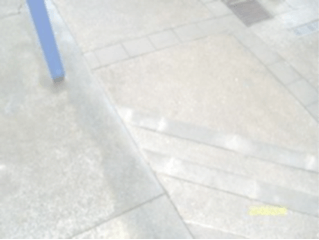
Figure 11 - A blurred image of steps in a school playground
Motor play is a fun way to develop
- Body image/concepts.
- Strength, endurance fitness.
- Spatial awareness/concepts
- Control over self and environment.
- Ability to use vision you have better.
- Interactive and communication skills.
- The ability to plan ahead.
These are all areas not seeing well can impact on.
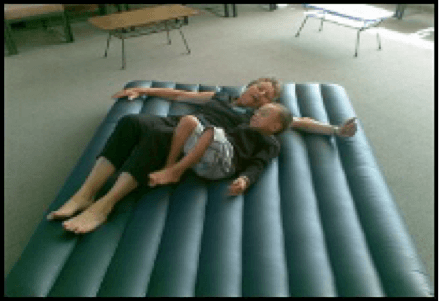
Figure 12 - Child and adult laying on an airbed, playing
So what is the sensory part and why is it important?
- We learn about our body and how it moves primarily via seeing it and feeling how it moves.
- When we can’t see it well we need to rely more on the ‘feeling it’ part.
- We FEEL how our body and its parts move most precisely and clearly when we move it ourselves with our body weight on it – this is through our proprioceptive sense.
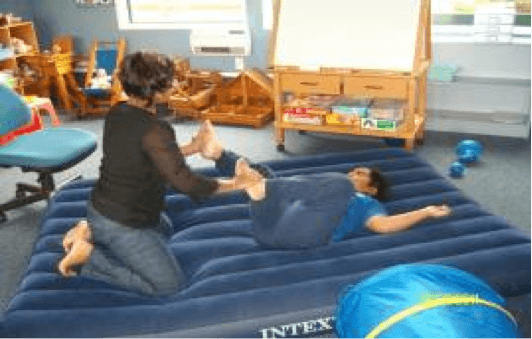
Figure 13 - An adult holding a child's legs on an airbed helping the child to sense movement of their body
Proprioception is
- Developed by weight bearing or resistance play, such as crawling, climbing, push pull games.
- The firm pressure helps our brain to learn about our body and how to move it efficiently to get what we want and where we want. Try waving your arm in the air and ‘feeling’ where it is. Then push down on it gently. The feeling of where it is, is clearer!

Figure 14 - Making a 'sandwich' of the person
Think of a baby. He...
Learns about his arms and how to move them with greater control via:
- First propping or putting weight through the shoulder and arms and hands over and over again. His brain is learning how to use his muscles and arms to push up. He then learns how to crawl by repeatedly weight bearing through his arms and legs, teaching his brain how to move their bits in increasingly efficient ways to get to the position and place he wants to get to!
- This weight bearing sends great message to the brain about how to move better and better!

Figure 15 - Crawling on a hard floor
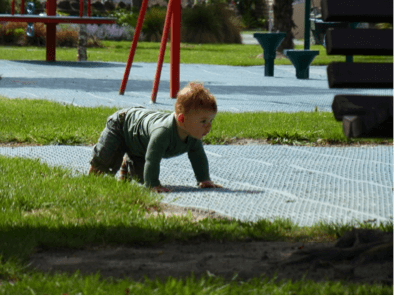
Figure 16 - Crawling on soft matting in a playground
We can use this proprioceptive sense to help the kids with vision impairment learn their body image. They can learn about how their body moves, even when they can’t move much themselves – by this firm sense of pressure.
NB: Always check with the team involved with the student before commencing any motor programming.
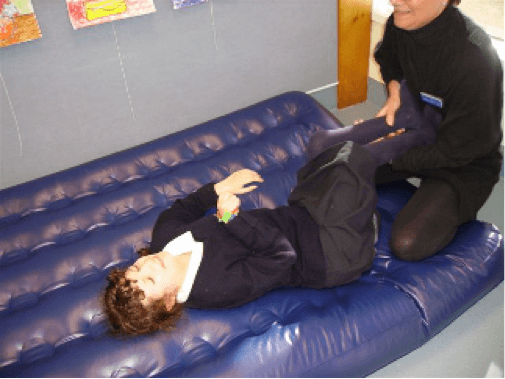
Figure 15 - Sam is pushing her legs out to push the Specialist away
More proprioception play ideas
- Pushing yourself on an office chair.
- Playing in a tunnel or blanket wrapping.
- Playing push n shove game.
- Playing animals in a zoo.
- Doing tasks at home.
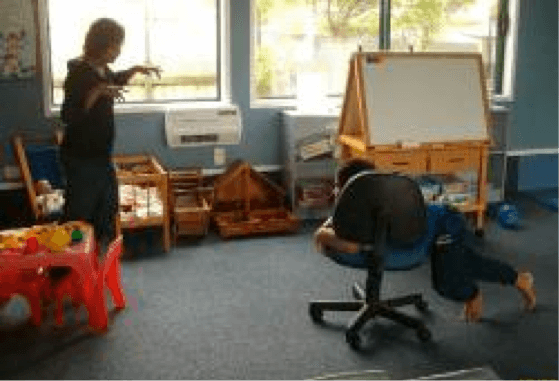
Figure 18 - A child in a classroom with their body across a chair with wheels, pushing the chair with their legs and 'chasing' their teacher
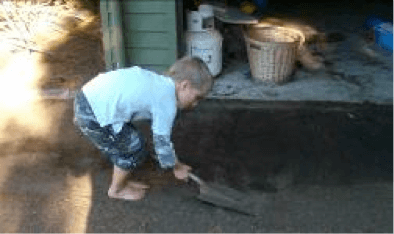
Figure 19 - Cleaning up sand outside a building

Figure 20 - Climbing up a playground slide
The sensory part also includes the VESTIBULAR sense
This is sensory input that kids get from:
- Swinging.
- Rocking.
- Hanging upside down.
- Spinning and going round and round.
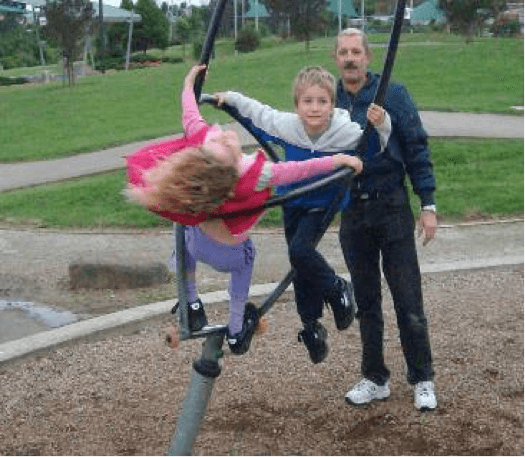
Figure 21 - Two children on a rotating piece of playground equipment
The vestibular sense helps to:
- Develop motor skills and control-including reflex integration.
- Develop balance.
- Increase arousal and attention/focus.
- Promote exploring of the environment.
- Control head and eye movements.
- Develop use of vision (fixation, movement).
- Define the ability to turn.
- Promote language and emotional development.
- Increase spatial awareness.
- Increase attention to a task (i.e. stimulates, calms and sets brain up for attention).
(Sources include: Schiffman, 1982; Daly & Moore, 1997)

Figure 22 - Two children on swings in a playground
Vestibular play ideas
- Rolling down hills.
- Spinning on an office chair.
- Rough and tumble.
- Rocking and bouncing.
- ‘Simon Says’.
- Anything that has the head position changing.
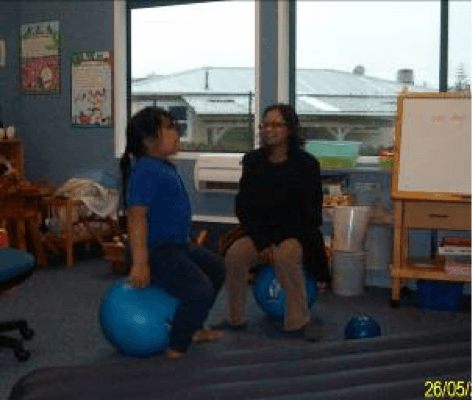
Figure 23 - Bouncing on fitness balls
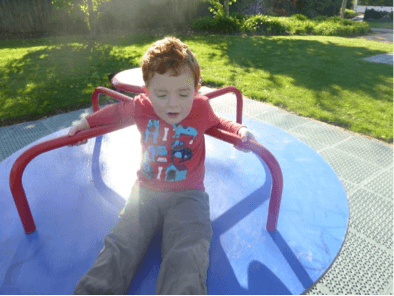
Figure 24 - Spinning on a playground carousel
Motor play – we all need it!
- Kids love it and it’s important for ALL children – especially for those with sensory issues (especially vision impairment!).
- Kids are RIGHT! Rough and tumble, running around and climbing are not just fun they are developmentally NEEDED!
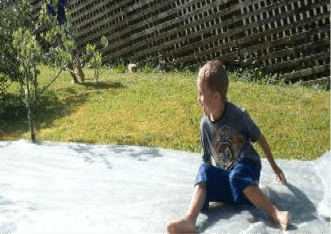
Figure 25 - Boy zooming down a waterslide
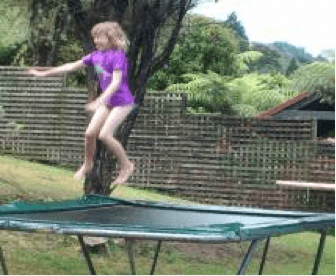
Figure 26 - Jumping on a trampoline
So enjoy!
Check with your local Resource Teacher: Vision for more information.
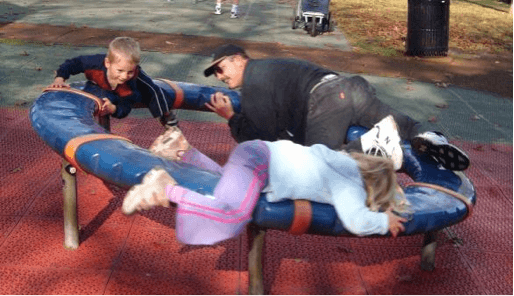
Figure 27 - Children and their dad spinning on a playground carousel

Figure 28 - Playing rough and tumble with dad
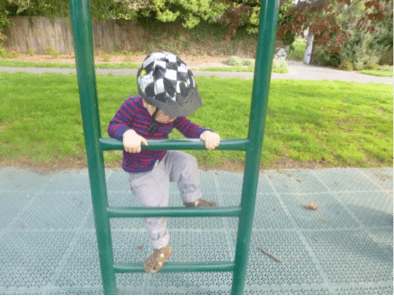
Figure 29 - Climbing up the steps of a playground
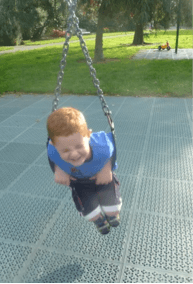
Figure 29 - Climbing up the steps of a playground
Links
- Get ready for School – website.
- Moving Smart – website.
Download this resource
This resource is available for download in both PowerPoint and Word versions.
- Document format: Motor play and Developmental Orientation & Mobility (DOM) [WORD, 1.6 MB]
- Presentation format: Motor play and Developmental Orientation & Mobility (DOM) [PPT, 1.6 MB]
Developed by Moving Forward Ltd and BLENNZ, 2014.